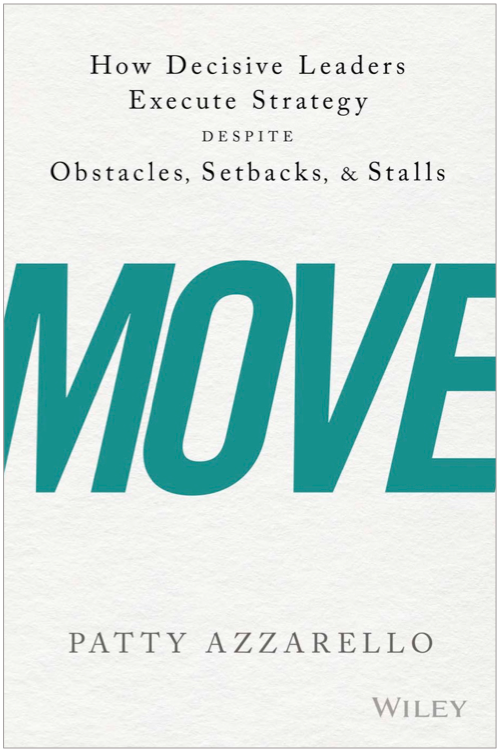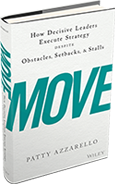
I also often talk about the importance of “Thinking like a General Manager.”
But, I haven’t really spelled it out…
If you are thinking like a General Manager, what would you be thinking about?
Think Broad, not Deep
Even if you don’t want to be a General manager…
If you want to make a relevant, significant contribution, and advance your career, you should think like a General Manager — no matter what role or level you are at.
You need to understand broadly what drives the business, so you can really understand how and where your piece fits in, how to add the most value, and communicate better outside your team.
Questions to ask
To help you get started, I put together a list of questions that a General Manager would want to know about the business.
This is not meant to be an exhaustive list to manage the business by. I haven’t included analysis of Financial Statements or Cash Flow. This is about understanding what makes the business go, across the whole business.
How does the company make money?
1. How does your company make money?
2. What are your sources of revenue? How much does each provide?
3. What are your sources of profit? How much does each provide?
4. What things are your company’s fixed expenses?
5. What things are your company’s variable expenses?
6. Where do you and your department fit in the expense picture?
7. Where do you and your department fit in the revenue generation process?
8. What can you do personally or with your department to impact revenue or profit?
Geography
9. Where in the world does your business operate? What things happen in which locations?
10. How is the revenue split among geographies?
11. How is the profit split among geographies?
12. What are the advantages that geographically dispersed workforce offers your company?
13. What are the biggest operational challenges the company faces with geographically dispersed teams?
14. What are the cultural considerations that impact how you operate in each geography?
Market
15. What markets does your company compete in?
16. Are your markets growing, shrinking or flat? Why?
17. How does your company’s growth compare to market growth?
18. What are the risks of your primary market changing and being less available over time?
19. How will you know? What are the most important triggers or changes in your markets to be watching for?
20. What is your primary advantage in the markets you serve?
21. What is your biggest competitive disadvantage in the markets you serve?
22. Where are the biggest opportunities for new markets?
Value Proposition & Strategy
23. How do you measure if your customers are successful? For them? For you?
24. How do your customers define whether or not their purchase was successful?
25. How much does your product cost the customer over the lifetime of owning it?
26. What is the most important thing the customer relies on your product or service to do for them?
27. How well does the customer think you do at what is most important to them?
28. How does the customer measure the ROI of your product?
29. Who are your most successful customers? Are they profitable?
30. Who are your most profitable customers? Are they successful?
31. How do your customers describe why they bought your product (or service)?
Competition & Market Perception
32. Who is talking most about your product space externally? What are they saying?
33. How do prospects in your market talk about you vs. your competitors?
34. What is being said about your company and products on message boards, blogs, and other social media?
35. What can you do personally to improve the discussion about your company and offers?
36. Who are your direct competitors? What are your indirect competitors?
37. How do your competitors answer these 100 questions?
Sales
38. How is your product sold? What are the steps in the process? How long does it take?
39. How much of your product is sold directly by your company?
40. What partners and other channels sell your product?
41. Which are the biggest sales channels?
42. What is the cost of each sales channel per dollar of revenue? Which are the most profitable?
43. Which channels provide the biggest source of referrals and new customers?
44. How are your internal sales people measured and paid?
45. How are your sales channel partners measures and paid?
46. How can they each make the biggest bonus or commission?
47. How do you get information from sales into your team?
48. How does your company train its sales channels?
49. What could you or your department do to make the sales team more successful?
Marketing
50. How much do you spend in marketing relative to others in your market?
51. What are the most important things Marketing is doing this year?
52. What are the key marketing messages that are being promoted?
53. How does your company use the web and social media to connect with customers and prospects?
54. How is the Marketing organization measured?
55. What are the most and least successful marketing programs?
56. Who are the key industry analysts, mavens, spokespeople for your market? What do they say about you?
Finding Customers
57. How does your company find new customers?
58. What does Marketing do to find new customers?
59. What does Sales do to find new customers?
60. What makes your current customers refer new prospects?
61. Do your customer support or services organizations uncover new leads? Could they?
62. How can you personally help find new customers?
Service and Support
63. How do you provide support and service to your customers?
64. Which types of support do customers prefer?
65. Does your company invest to provide service as a competitive advantage or treat it as only as a cost?
66. What is the cost of support for each product line? Which have the highest support costs? Why?
67. Does the cost of support align with the profitability of the product?
68. Are there any bad support practices which damage customer relationships?
69. Are there any product issues which create too many support and service needs?
70. Do you make money on Support? How?
71. Do you make money on Service? How?
72. Do you give away service and support to generate new business?
73. How are the service and support teams measured and paid?
Product Development
74. How much do you spend on Product Development relative to other companies in your market?
75. What is the product development team measured on?
76. How does the product development team decide what to build?
77. How does the product development team deliver to schedule commitments?
78. How does the product development team get input/feedback from customers?
79. How does the product development team measure and track quality?
Supply Chain & Manufacturing
80. How does your product get built?
81. Is cost of with building your product a either competitive advantage or dis-advangage?
82. How are costs measured and tracked?
83. How is quality measured and tracked?
84. Who are all of the vendors and partners involved?
85. Which are the largest partners/suppliers?
86. Which partners or suppliers have you as their biggest customer? Smallest?
87. On what basis are vendors and component parts selected?
88. On what basis are suppliers chosen?
89. What is the method of communicating with partners?
Distribution Channels
90. How does your product actually get to the end users/consumers?
91. How long does it take between customer order, customer payment, and receipt of goods?
92. Is your distribution process a competitive advantage in your business or not?
93. What are your distribution mechanisms and technologies?
94. What is the speed and cost of each?
95. Which do the customers prefer?
Technology
96. What are the key technologies that your business depends upon?
97. What aspects of your technology create the most risk in your business?
98. How do the IT costs relate to the business objectives?
99. How can/does technology provide a competitive advantage to your business?
100. How can/does technology provide a cost advantage in your business?
Some actions to take with this list:
- Make sure everyone on your team knows how the company makes money – this is so important if you want your team to contribute to the business in a meaningful way.
- Give a section of this list to a high performer as a development exercise. Have them go get the answers and then educate your team.
- Invite a person from another area of the company into your staff meeting, and use these questions to start a discussion and learn how their group works.
- Personally meet people in other functions and use this list to start a discussion to learn what they care about.
Why does this matter?
By thinking like a GM you will:
- Get better ideas for how to add value to the business. See connections you would otherwise miss. Always be working on things that are most important to the business.
- Be able to speak in the language of the business. Talk about what you do in a way that really matters to others. Be more relevant. Negotiate better.
- Rally your team around a bigger purpose. Motivate them, show them how what they do fits into the overall strategy.
Have more impact, and build career capital
Thinking like a General Manager, by definition puts you on a broader playing field and reveals issues and opportunities beyond your function you would not otherwise notice.
It gives you an opportunity to connect and communicate with the the business so that you improve both your results and your status.
Please add your ideas for thinking like a General Manager as a comment on the blog.
Attend the next FREE Webinar on:
LEADING CHANGE
March 17, 11am PST
Register Here


